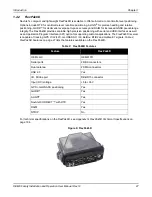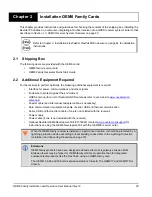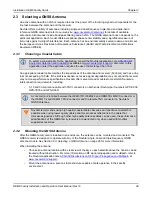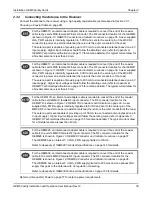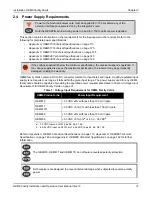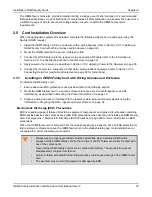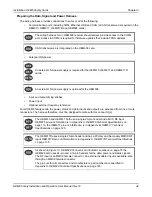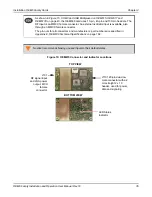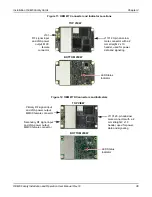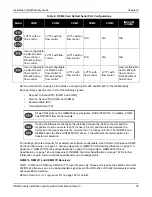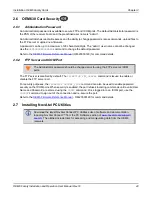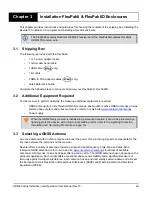
Installation OEM6 Family Cards
Chapter 2
OEM6 Family Installation and Operation User Manual Rev 12
34
Preparing the Data, Signal and Power Harness
The wiring harness provides connections to some or all of the following:
•
Communication ports, including COM, Ethernet, USB and CAN (a CAN transceiver is required on the
OEM615, OEM617, OEM617D and OEM628 cards)
•
Antenna/LNA power
•
Input and output timing strobes
•
Power input
•
Optional external frequency reference
For all OEM6 family cards, the power, status and data inputs and outputs are accessed from one or more
connectors. The harness therefore, must be designed to mate with this connector(s).
The wiring harness for on OEM638 receiver should always provide access to the COM2
port. Access to COM2 is required for firmware updates that include FPGA updates.
CAN transceivers are integrated on the OEM638 card.
An external LNA power supply is required for the OEM615, OEM617 and OEM617D
cards.
An external LNA power supply is optional for the OEM638.
The OEM615 and OEM617 both use a single 20-pin header and a MCX RF input.
OEM615 pin-out information is in
Appendix A, OEM615 Technical Specifications
page 113; the OEM617 pin-out information is in
The OEM617D uses a single 20-pin header and has a Primary and Secondary MMCX RF
input. OEM617D pin-out information is in
Appendix C, OEM617D Technical Specifications
As shown in
Figure 13, OEM628 Connector and Indicator Locations
OEM628 card uses 24-pin and a 16-pin headers for the data, power and status signals:
The RF input is an MMCX female connector. An external oscillator input is available, also
through an MMCX female connector.
The pin-outs for all connectors and manufacturers’ part numbers are specified in








